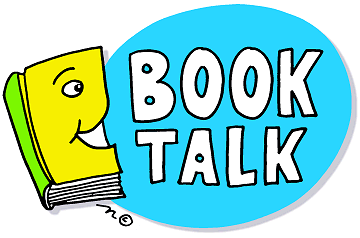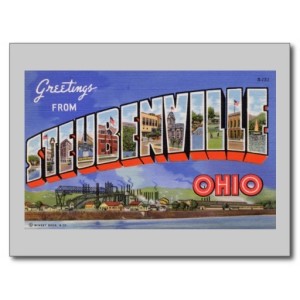
2022-2023 SCHOOL YEAR
“AN AUTHOR-IZED BOOK”
ONE SCHOOL, ONE BOOK
Get your whole school on board to read one volume from THE BOOGER AND BEANS MYSTERY SERIES.
Imagine how exciting it would be if all of the people in your school – from students to office secretaries to teachers to cafeteria staff to nurse to maintenance staff to the principal and more – got a copy of a Booger and Beans book, read it and shared their experiences.
As a reward, the AUTHOR WILL VISIT YOUR SCHOOL at no cost to you!
The author will work hand-in-hand with the principal / media specialist / teachers / Home and School Organization to “tailor make” a DAY WITH THE AUTHOR. Here are a few suggestions:
- Special assemblies
- Lunch with the author
- Hands-on writing workshop (for teachers, students or both); workshop for parent writers
- Book Club meeting after school
- Student Writer recognition and awards ceremony by the author
- A week long “fanfare” leading up to the actual event day
- A count-down with fun benchmarks
- A red carpet arrival
- A theme and goal commencing at the onset of the school year, culminating in the accomplished outcome (can occur anytime during the SY)
(Suggested for Upper Elementary or Intermediate schools, grades 4 and 5; Middle Schools, grades 6 through 8.)
Please note: REFERENCES are available upon request.

“REACHING 4 THE SKY – PE” EVENT!
A “free” one hour SKYPE or ZOOM event for a class of students and its teacher – with the purchase of a class set (30 copies) of one volume from THE BOOGER AND BEANS MYSTERY SERIES. Also, a signed, dedicated copy of the book will be donated as a permanent part of the classroom library.
You and your students have the opportunity to prepare questions and comments for discussion with the author, and the author gladly will share her life and her heart with you all!

DIVERSE VISITS BY THE AUTHOR:
A. Unique assembly program – – featuring the author, the creative journey and process of writing THE BOOGER AND BEANS MYSTERY series, cover art, formatting the interior manuscript, the genre and figurative language, Q and A
B. Specialized classroom visits
C. Writing Workshop on Narrative Suspense Writing
D. After-School BOOK CLUB Discussion (for students, teachers and/or parents)
*All of these are negotiable in pricing. Prearranged book orders can be done in advance and signed / dedicated in the presence of the students.
BOOK FAIRS:
Arrange for the author to set up shop at your school’s Book Fair. Interaction with parents and students can occur at the beginning, middle or end of the week. Even a special presentation before, during or after the times of the Book Fair can be arranged. Book signing, too, can add value for your student readers as they exchange dialogue with the writer!
USE THE FOLLOWING RESOURCES FOR SUCCESS IN YOUR CLASSROOM!

READING ACTIVITIES:
1. How to encourage the reluctant or timid oral reader: Read aloud the first chapter of the book together as a class, but alternate the voices: The teacher reads the first page, the girls read the second page, the boys read the third page, the entire class reads the next page and so on OR alternate silent page reading periodically among the read alouds. At specific intervals – a) discuss plot details, b) the evolution of the characters, c) figurative language, d) subplots, e) setting and more. Also, locate answers to pre-reading questions.
2. Read aloud a chapter in small cooperative learning groups (of three or four, no larger). Students decide who will role play a) narrator; b) main character one; c) main character two; d) others. Take turns in different voices. Upon completion of an assigned length of reading, students discuss different focuses (theme, dialogue content, figurative language, setting, vocabulary). An advanced graphic organizer also can be used to record their findings.
*These can be done in “Expert Groups” then “Jigsaw Groups” so students TEACH the others and share their findings.
3. While reading the first chapter of the book, keep a list of frequently used “mystery related” words and/or “description words.” Make predictions as a class as to how many times these words might appear throughout the rest of the book. After the book’s completion, write a one pager about how a particular word can help shape the content or plot of the book.
4. Study the language of the dialogue among the characters. In a “Reading Log,” jot down the informative pieces that lend important detail to the story’s plot.
5. Keep a T-Chart for Self-to-Text OR Post-It Notes on the actual reading pages. (Post-It Notes can be in T-Chart format.). Also can be used for Text-to-Text and Text-to-World.

WRITING ACTIVITIES:
Short Well-Organized Paragraphs –
1. If Beans and Booger had a complete, traditional family (with mother and father plus siblings), how would the story be different or be impacted?
2. Among all of the chapters, which one(s) ended with a “cliff hanger” effect?
3. What are Haddie’s behaviors that allow the reader to see what a bright and clever little girl she is?
4. How do the titles for all chapters prepare the reader for their content or provide a “sneak preview” of what’s to come?
5. If the author decided to continue the story for one more chapter, what would happen? How did you determine this?
6. Compare and/or contrast: Select two different books in the series and compare and/or contrast a particular character or mystery. In what ways are they the same and how are they different?
Essays and Other Genres of Writing –
1. Reactionary “one pagers” in writing are good practice for students. They require them to a) not only use attention getters, thesis statements, topic sentences for body paragraph(s), well balanced and purposeful conclusions b) but also use transitional language to make ideas flow effectively. A variety of prompts can be used to provide thought-provoking content. (See #2 above)
Other prompts can include but are not limited to the following: a) What evidence do you remember reading that allowed you to clearly understand the time frame and setting(s) in the story? b) Who is the most influential character in the story? c) How important are the parents and elders in the community of Mill Creek?
2. Create a mini-mystery that uses your own home as a setting. Before writing this story, think of a) What handful of characters / people will be involved? b) What will be at the center of the mystery c) Who will solve the mystery? d) Will the mystery change the dynamic among the characters in the story?
3. Rewrite a few paragraphs from one page in a chapter, but be selective about the action that occurs. Focus on the use of a descriptive color palette that adds or intensifies the “mood” of that section. What made you choose this color?
4. Use the interactions between two characters to “rewrite” one scene from a “stream-of-consciousness” perspective, being honest and truthful with each character’s real thoughts.
5. POEM – Select ten key sentences from throughout one chapter that sum up its content. Pare each sentence down to the essential phrases. Use these in a vertical structure of lines of a poem. Zoom in on one particular word or set of words that can be repeated for effect or perhaps emphasize the chapter’s theme.

VISIT THE PLACES WHERE BEANS LIVED BEFORE MILL CREEK, NEW JERSEY
Before Beans moved to MILL CREEK, NEW JERSEY, she lived in Seattle (Washington), Galveston (Texas) and Steubenville (Ohio). Click on the postcards below to visit these cities.







